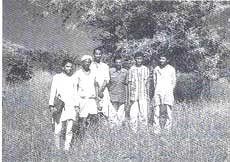Seed to flower
 IT ALL began in the early 1980s, when the village of Seed near Udaipur in Rajasthan registered itself under the Rajasthan Gamdhan Act of 1971 that gave the gram sabha full control over all the land within the village boundary, including erstwhile government land. The sabha, consisting of all adults of the village, devised clear rules for the protection of the village commons.
IT ALL began in the early 1980s, when the village of Seed near Udaipur in Rajasthan registered itself under the Rajasthan Gamdhan Act of 1971 that gave the gram sabha full control over all the land within the village boundary, including erstwhile government land. The sabha, consisting of all adults of the village, devised clear rules for the protection of the village commons.
In Seed, a sustainable land-use plan and rules to enforce it have been implemented successfully. The commons have been divided into two categories -- one on which both grazing and collecting leaves are banned and the other on which grazing is permitted but leaf collection and tree felling are banned.
Today, Seed is a lush of green in the denuded Aravallis. Even during the unprecedented drought of 1987, its villagers were able to harvest 80 bullock cart loads of grass. The grass of the commons is annually harvested and equitably distributed. The sabha prohibits felling trees even on private lands. However, permission is given if the wood is put to domestic use. The sabha also has a system of penalties to enforce disciplined use of the village trees and pastures.
The experience of Seed clearly demonstrates how Mahatma Gandhi's concept of village republics can work for ecological regeneration. Seed, with its active community forum and an ecosystem of its own to control, manage and share, where common resources are developed and improved, shines like a beacon. The Mahatma would have been happy.
Related Content
- Sal forests shrinking due to climate change: Study
- Climate change is advancing spring onset across the U.S. national park system
- Adansonia digitata L. (baobab): a review of traditional information and taxonomic description
- Fungus Can Increase Flower, Seed and Fruit Production in Plants: New Method for Agriculture
- PSC approves 39 varieties of various crops
- Insecticide 'unacceptable' danger to bees, report finds
